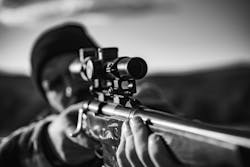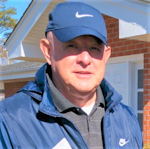The role of technology in stopping active shooters
Recently it seems like there has been a daily active shooting incident in which numerous individuals have been killed or seriously injured. In the U.S., there have been over three hundred mass shootings this year alone, according to the Gun Violence Archive.
We are now wondering if there is anywhere safe to go. Shootings have occurred in cities, suburbs, and in rural areas. In the past, we have seen deadly shootings at schools, colleges, hospitals, malls, movie theaters, military bases, restaurants, night clubs, and outdoor concerts. Shooters will always look for the soft targets.
The recent shooting at the Fourth of July parade in downtown Highland Park, Ill., is a reminder that those who are responsible for the security and planning of these events need to realize the threats are higher anytime a large number of individuals are together.
In this case, the shooter was able to position himself on a rooftop unobserved with an assault rifle with numerous rounds of ammunition. Once the parade started, the gunman was able to fire off over eighty rounds into a large crowd below.
The scene was total chaos with individuals running to escape the barrage of gunshots. The shooter was able to get off the roof and blend into the crowd, but not before killing seven and wounding 46 others. The gunman, identified as 21-year-old Robert “Bobby” Crimo III, was located and arrested a short time later.
Not the First Sniper Attack
This is not the first time a sniper has indiscriminately fired upon people at an outdoor venue in the U.S. On Aug. 1,1966, former marine Charles Whitman took rifles and other weapons to the observation deck atop of the main building tower at the University of Texas at Austin where he opened fire 70 meters above the ground. In 96 minutes, he shot and killed 14 people and wounded 31 others. Whitman was later was shot and killed by law enforcement.
Again, on October 1, 2017, a gunman, later identified as 64-year-old Stephen Paddock, opened fire from the 32nd floor of the Mandalay Bay Resort. Paddock fired more than 1,000 rounds from over 400 meters away, killing 60 and injuring more than 800 at the Route 91 Harvest Music Festival.
Police officers were initially unable to locate where the shots were coming from. There were many erroneous reports, including that the shots were coming from the festival grounds and other hotels. Officers eventually saw flashes coming from the Mandalay Bay hotel room and that started the search that brought them to the 32nd floor.
Paddock had already shot himself when a SWAT team entered his hotel room. This is the deadliest mass shooting in modern American history, to date.
How Technology Can Help
We must comprehend that an active shooter situation can happen anywhere, anytime, day or night and no city or town is immune.
Those individuals who are responsible to setting up events, either indoors or outdoors, must now have a contingency plan in place for each event in the future and security must be at the forefront.
There is technology on the market today that can instantly and precisely locate on sniper fire. Many of these technologies are based on a network of acoustic sensors that can be mounted on poles or buildings, which can subsequently be placed in or around the areas of specific venues.
When multiple sensors detect rifle shots, they trace the shots back to a mapped building or structure location, including the exact floor, and instantly send the alert out to first responders and/or other systems.
This drastically reduces the time it takes to detect the shooter’s location. An instant alert with information that responders can use to directly dispatch to the location increases the chances that lives will be saved.
With automated, precision location information, it is possible to consider automating part of the response, such as delivering shot location reports to drones that can rapidly fly to a shooter and distract or otherwise engage them.
Reports can also be delivered to building systems that can activate announcements or to spotlights that can be pointed towards the shooter.
Many cities are already using wide area gunshot location technology that the police department budgets for. The cost of ownership for a technology to detect high-angle shooters is reasonable in comparison. A city or community could decide on purchasing gunshot detection technology that provides this capability.
Alternatively, they may choose to focus on certain areas where people gather, such as town squares, parks, etc., where this technology can improve the sense of safety and security. Privately-owned properties like apartment communities, campuses, business districts, entertainment facilities and other venues can deploy a system at a relatively low cost.
There is no way to predict where the next active shooting will occur but having a strategic plan and utilizing current technology could reduce the risk and save lives.
About the Author:
Patrick V. Fiel Sr. is a security expert working with Databuoy Corporation, the maker of Shotpoint, an acoustic gunshot detection and localization system. He is also the founder of PVF Security Consulting and presents on security trends, shootings, risk assessments, emergency/crisis preparedness and current security solutions. Fiel can be reached at (910) 789-4265 or at [email protected].



